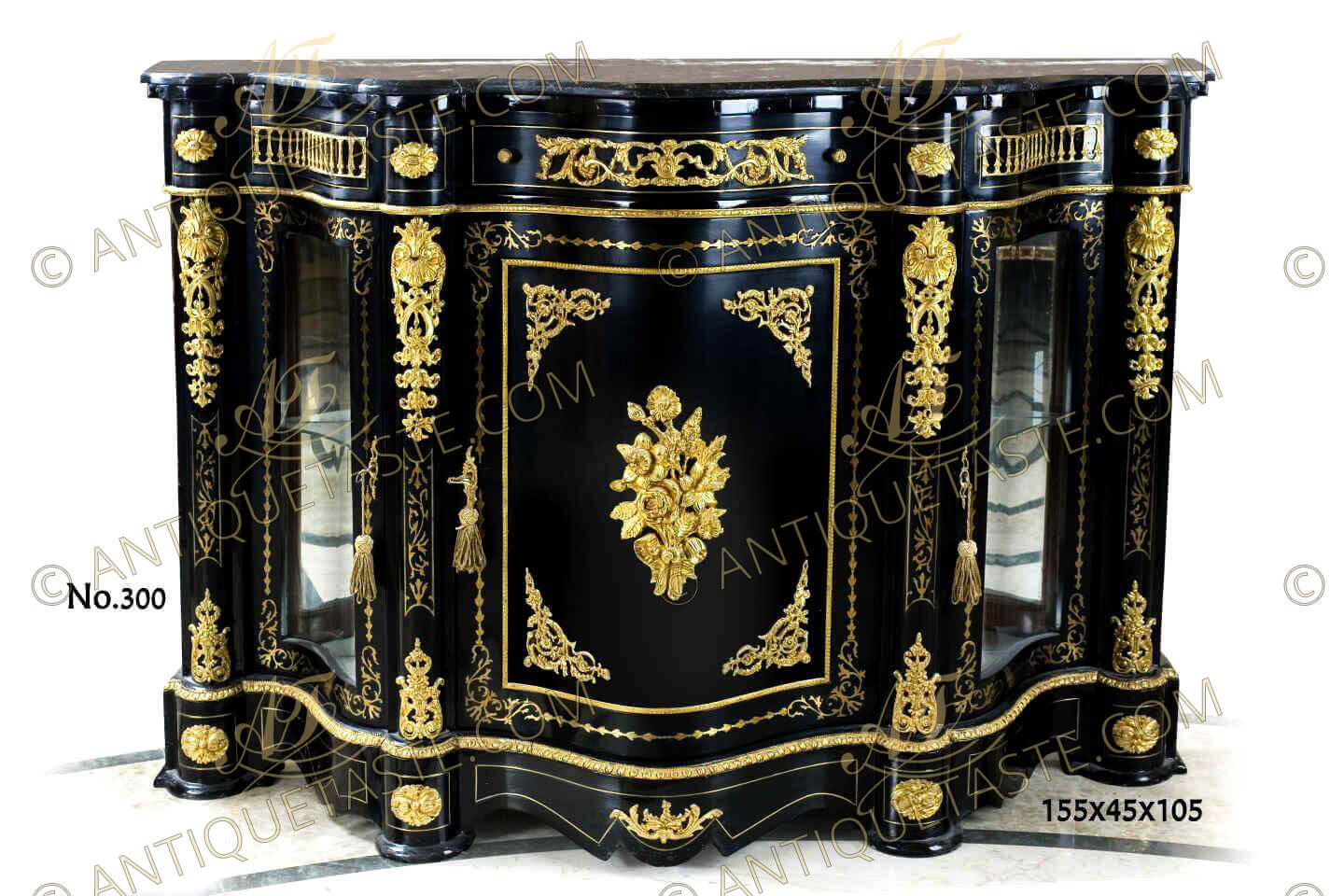Ref#300 | Description
A Napoleon III gilt-ormolu mounted ebonized side cabinet of serpentine outline, inlaid overall with foliate strapworks and acanthus scrolls, marble topped above a conforming frieze with central drawer ornamented with ormolu acanthus scrolls and ormolu pulls flanked by curved sides ornate with ormolu galleries separated by flower rosettes on a curved blocks, all above a central door ornamented with fine chiseled gilt-ormolu flower bouquet cornered with ormolu scrolling foliage within an ormolu border and hand gilt decoration with a fine ormolu keyhole escutcheon, a large fine chiseled and burnished acanthus, shell and palmettes chutes to each side and flanked by shaped glass doors sided with the same ormolu espagnolette, all on a scalloped shaped plinth with the same ormolu works and gilt patterns.
Ref#300
155 x 105 x 45 cm
The Napoleon III style:
The Napoleon III style is the name commonly given to a 19th-century style of Renaissance Revival architecture in France, especially in Paris. It is a sub-style of Second Empire architecture, which is a term also used elsewhere in the world for this style. It is characterized by its eclecticism, because of the mix of decorative elements from the past. It flourished during the Second French Empire, with the patronage of Napoleon III.
The term "Napoleon III style" (French: style Napoléon III) may be contemporary: legend has it that when the Empress Eugénie asked architect Charles Garnier whether the Palais Garnier, under construction in 1862, would be built in the Greek or Roman style, he replied, "It is in the Napoleon III style, Madame!" The term is also not reserved exclusively for architecture. It is used also to describe furniture of the period, especially in the marketplace, where other "royal period" styles are commonplace.
The style is characterised by high façades, mansard roofs, and, more rarely, pavilions. The buildings are richly decorated but with clearly defined outlines. The Napoleon III style is associated with the renovation of Paris under Baron Haussmann between 1852 and 1870. The buildings of the renovation show a singularity of purpose and design, a consistency of urban planning that was unusual for the period. Numerous public edifices: railway stations, the tribunal de commerce, and the Palais Garnier were constructed in the style.
Tags
- #Napoleon III Commode | #Napoleon III style Cabinet | #Napoleon III Side Cabinet | #Napoleon III Sideboard | #Meuble A Hauteaur D'appui | #Commode a vantaux | #Antoine Gaudreaux Commode | #Jean-Henri Riesener commode | #Marie-Antoinette commode | #Charles Cressent commode | #Maison Millet commode | #Pierre Antoine Foullet commode | #André Charles Boulle commode | #French style commode | #Louis XV commode | #Louis XIV commode | #Louis XVI commode

